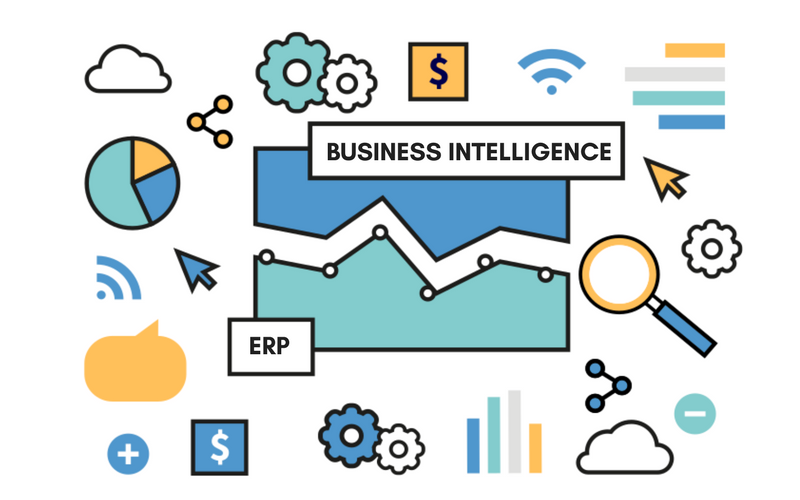
In a world rife with data, harnessing the power of it should be the top initiative on every company’s agenda. Developing a sustainable analytics program isn’t just a way to get a leg up on competitors for new innovations, but it’s also a way to enjoy a leaner operating budget.
Business intelligence (BI) is the process of gathering, analyzing, and presenting data to help businesses make better decisions. BI can be used to improve a wide range of business functions, including sales, marketing, operations, and finance.
By using BI to gain insights into their data, businesses can identify areas where they can improve their efficiency, reduce costs, and increase sales.
For example, a retailer might use BI to track customer buying patterns and identify products that are not selling well. This information can then be used to discontinue underperforming products and focus on products that are in demand.
Another way that BI can help businesses improve their bottom line is by helping them to make better decisions. By providing businesses with access to data and insights, BI can help them to make more informed decisions about everything from product development to marketing campaigns.
As a result of these benefits, BI is becoming increasingly important for businesses of all sizes. By using BI, businesses can gain a competitive edge and improve their bottom line.
Here are some specific examples of how BI can affect the bottom line:
- Increased sales: BI can help businesses increase sales by identifying new customers, upselling to existing customers, and cross-selling related products.
- Reduced costs: BI can help businesses reduce costs by identifying areas where they are wasting money, such as on inefficient processes or unnecessary inventory.
- Improved decision-making: BI can help businesses make better decisions by providing them with access to data and insights. This can lead to better marketing campaigns, more efficient operations, and improved customer service.
Overall, BI can have a significant impact on the bottom line. By using BI, businesses can gain a competitive edge and improve their profitability. In this article we discuss different ways business intelligence affects company bottom lines.
Instant Access to Accurate Business Data Improves Decision-Making & Enhances Productivity
Some industries move at a faster pace than others, but the interconnectedness of our digital economy guarantees changes the way decisions should be made. Some companies and business leaders don’t mind making these choices without numbers in hand, but is this the more cost-effective route?
Business intelligence tools make data easily accessible for employees across a company. When a question surfaces or an issue requires more digging, self-service tools offer end users speed and flexibility.
More Autonomy for Non-Technical Employees Leads to Higher Engagement & Retainment Rates
BI technology has improved over the years, but many companies employ large teams of data professionals just to build reports for users all day long. These organizations are undoubtedly better off than companies not even using data, but the process is still inefficient. When employees have to wait days or weeks for answers to their questions, they don’t have a lot of incentive to think critically. Instead, they’re prone to stay in their lane, at best taking care of their tasks, at worst gradually disengaging.
Implementing user-friendly tools provides all levels of employees with a sense of autonomy. They no longer have to make educated guesses or experience frustration from being blocked on a task because they don’t have the answer. Instead, they can tap into all sorts of insights in seconds.
Freed Bandwidth for Data Professionals Provides Them with More Challenging Work & Aids Long-Term Company Goals
Business intelligence tools claim to do the work of one thousand data analysts. Whether that’s true or marketing hyperbole, the right BI software should free bandwidth for the data team. This isn’t to say that technology absolves data professionals of tedious tasks and structuring data, but they’ll no longer be spending their days building basic reports and labeling data sets. With more availability from the data team, businesses can challenge them with higher-level tasks that affect long-term business outcomes.
Clear Supply Chain Visibility Helps Forecasts Issues Ahead of Time to Improve Margins & Uphold Reputations
Each day brings unforeseen obstacles to business’ doorsteps. Companies should accept this inevitability, but not by withdrawing their defenses. In the supply chain, specifically, companies can make or break their reputation. It’s difficult making accurate forecasts when partners use their own—or no—data
Modern business intelligence solutions incorporate embedded analytics applications to give an organization and its extended ecosystem a uniform foundation of truth around data. Having clear visibility over every aspect of the supply chain can alert businesses of all sorts of looming issues before they become problems. From spotting a machine breakdown before it creates a bottleneck to replenishing orders to avoid an out of stock, getting a stronger grasp on the supply chain is essential to enjoying healthy margins and keeping business operations moving.
It would be impossible to list all the unique ways real-time intelligence enables businesses to maintain stronger bottom lines. However, these high-level benefits are more than enough reasons for any data-agnostic organization to build their future around data.




